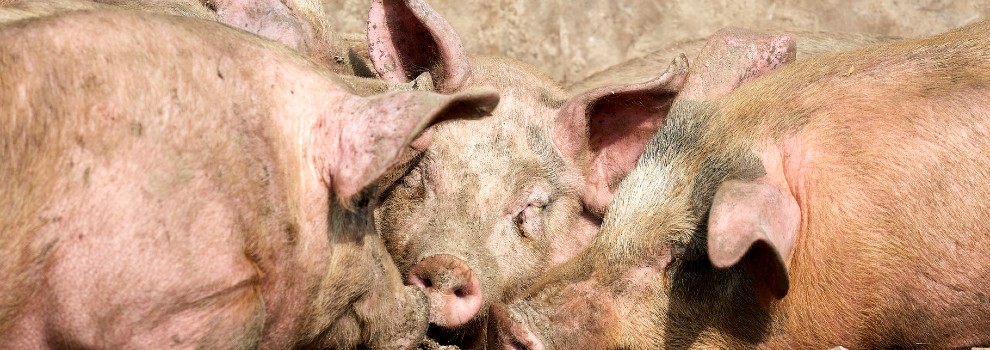- Find a Pet
- Advice and Welfare
- Ways to Give
- Get Involved
- What We Do
- Search
- My RSPCA
- Report a concern
- Sponsor
-
Colour modeVivid Calm
- Home
- Advice and welfare
- Farm animals
- Slaughter
- Key welfare issues
Key issues with animal stunning
We're very concerned for the welfare of farm animals at the time of slaughter. Here are some of the main reasons why.

Stunning of large animals
There's a risk that some cattle, pigs and sheep may not be stunned effectively, causing them to regain consciousness before they die from blood loss. For stunning to be effective, it's vital that:
- The stunning equipment is working properly - it should be regularly checked and maintained
- The stunning equipment is positioned correctly on the animal's head/head and back
- Enough current is applied during electrical stunning, for a long enough period
- The correct cartridge is used to fire the captive bolt during captive bolt stunning
- The time between stunning and sticking isn't too long, to prevent animals from regaining consciousness
Stunning of poultry
There are complex problems surrounding the stunning of poultry. We're particularly concerned about the use of electric water bath systems, as these involve the painful shackling of live birds. The way they're designed can result in some birds missing the water bath stunner, or receiving painful pre-stun shocks as they enter the stunner.
This system can also mean that there's not enough electrical current flowing through the bird's body to ensure it's unconscious. They can also be designed so that birds passing through an automatic neck cutter only receive a single cut to the neck, which reduces the rate of blood loss.
What's more, this system can result in birds accidentally missing the automatic neck cutter. If these birds aren't noticed by the slaughter person, they may still be alive when entering the scalding tank - a tank of boiling water that helps to loosen the feathers prior to plucking.
We're also concerned about gas-killing systems, as these can mean that conscious birds may be exposed to highly aversive levels of carbon dioxide gas.
Slaughter without pre-stunning (religious slaughter)
Read more on the key welfare issues of religious slaughter.



